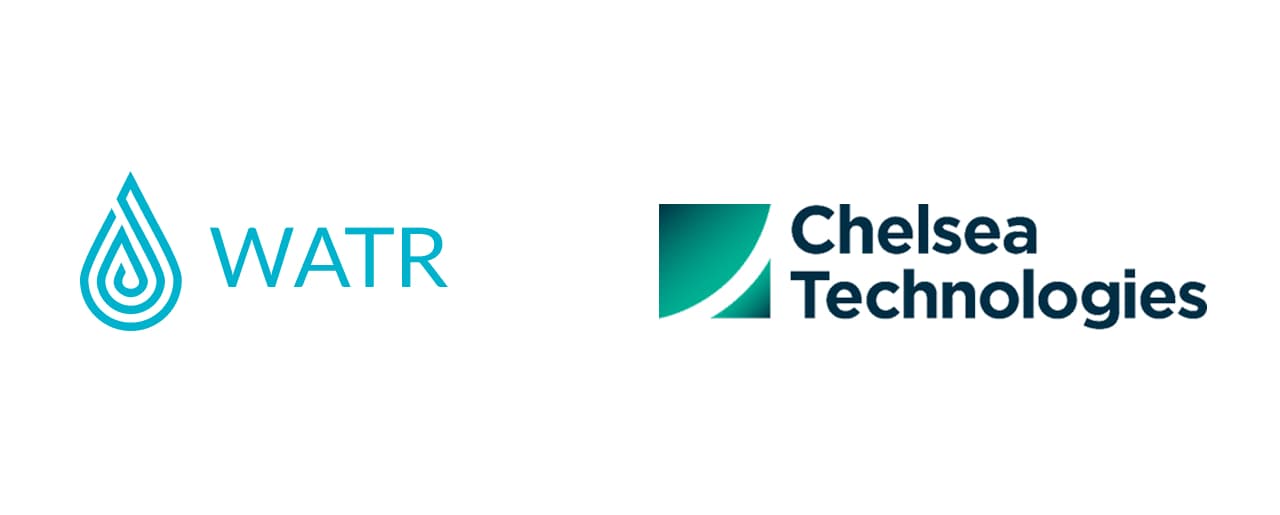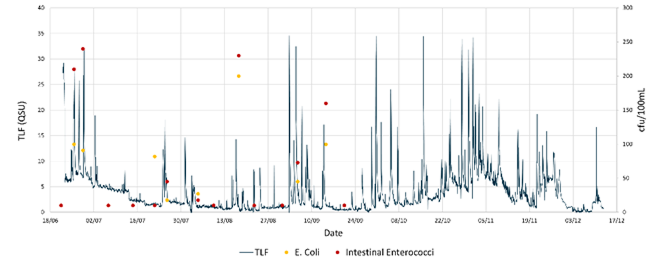WATR and Chelsea Technologies Collaborate to Transform Real-Time Water Quality Monitoring
A new real-time, low-maintenance sensor system is transforming how pollution in UK rivers and coastal waters is detected and managed, delivering continuous, actionable water quality data for improved environmental protection.

UK rivers and coastal waters face growing pollution threats from sewer overflows and agricultural runoff, endangering ecosystems and public health. Traditional manual sampling often misses short-term pollution events, highlighting the need for real-time, scalable monitoring. To address these challenges, WATR deployed real-time water monitoring systems integrated with Chelsea Technologies’ UviLux sensor.
This collaboration enabled continuous data collection, identification of pollution events and provided actionable insights for regulatory compliance and environmental protection. The low-maintenance sensors demonstrated exceptional reliability over extended deployments, proving their value in coastal and riverine environments.

Introduction
Rivers across the UK are under increasing threat from pollution, particularly from combined sewer overflows (CSOs) and agricultural runoff. These inputs not only damage ecosystems through nutrient loading and eutrophication but also endanger public health when pathogens are introduced to recreational bathing waters.
Current monitoring approaches that rely heavily on manual sampling are resource-intensive and intermittent, often missing short-lived pollution events. As a result, there is an urgent need for scalable, real-time solutions that can detect and differentiate between various sources of contamination, including those carrying bacterial risks.
WATR, a leading provider of innovative water monitoring solutions, partnered with Chelsea Technologies to tackle these challenges. This project is a good example of a sensitive environment where inland pollution can impact a popular bathing beach. The project’s objective was to implement a scalable, real-time monitoring system to accurately identify pollution sources and prevent contaminants from reaching vulnerable aquatic ecosystems.
The Challenge
To address these issues, WATR implemented a network of real-time water monitoring systems across the catchment. These systems included multiple sensors for key parameters such as dissolved oxygen, pH, conductivity, temperature, and ammonium levels.
Chelsea Technologies’ UviLux sensor was installed on a WATR buoy upstream of the bathing beach, offering advanced measurement capabilities, including: Tryptophan-like Fluorescence (TLF) for detecting bacterial activity, and Fluorescent Dissolved Organic Matter (FDOM) for detecting organic contaminants.
The UviLux UV excitation light helps inhibit biofouling, eliminating the need for mechanical wipers or frequent manual cleaning. With calibration intervals of up to two years, these sensors significantly reduced maintenance costs while ensuring uninterrupted, high-quality data collection.
The Results
Looking over a six-month deployment, the system delivered valuable insights into pollution dynamics across the catchment:
- Correlation of Pollutants: Ammonium spikes closely aligned with TLF/FDOM measurements during most pollution events, indicating a common contamination source.
- Rainfall Events: TLF/FDOM spikes were strongly associated with stormwater runoff, underscoring the impact of rainfall on water quality.
- Unique Contamination Insight: One notable ammonium spike with low TLF and FDOM values highlighted the need for both metrics. This anomaly suggested a source of ammonium unrelated to bacteria, emphasising that each measurement offers distinct insights into contamination risks.
- No Biofouling: The UviLux sensors showed no signs of biofouling, even without active antifouling strategies in place.
- Regulatory Relevance: TLF and FDOM measurements demonstrated alignment with Environment Agency E. coli and Enterococci counts but highlighted the limitations of intermittent sampling.



Implications For Future Monitoring
The findings from this deployment highlight several advantages of Chelsea Technologies’ TLF/FDOM sensors for long-term water quality management:
- Reliable in Coastal Environments: Unlike ammonium sensors, which struggle in saltwater, TLF and FDOM sensors offer a reliable alternative for detecting sewage-related pollution.
- Cost-Effective Maintenance: With a two-year calibration interval and resistance to biofouling,
- TLF and FDOM sensors lower operational costs while enhancing data collection efficiency.
- Enhanced Risk Differentiation: By simultaneously measuring bacterial and nutrient contamination, these sensors provide a clearer picture of pollution sources and associated risks.
Conclusion
The collaboration between WATR and Chelsea Technologies demonstrates the transformative potential of real-time, sensor-based water monitoring. By delivering precise, actionable data with minimal maintenance requirements, this solution sets a new standard for sustainable water quality management in highly sensitive environments.
Looking ahead, TLF and FDOM sensors can expand monitoring capabilities across diverse water systems, safeguarding ecosystems and public health in coastal and inland waterways alike.
For more information, get in touch with our team today.
Get in touch
WATR has been designed to improve water quality around the world by providing an easy, accurate and a reliable way of monitoring water conditions, if you have any enquiries or questions please get in touch. Send us your specific requirements and we will get back to you as soon as possible.